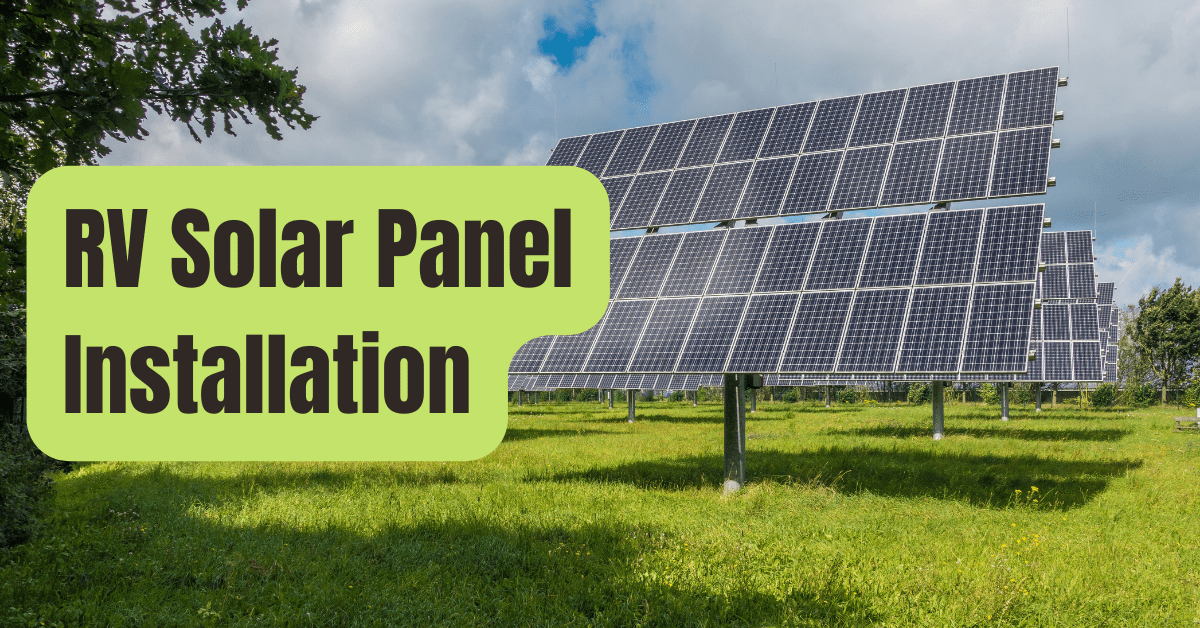Rooftop solar panels RVs are quite popular.
Everyone has them installed.
But what are solar panels for an RV? What can they do for you, how do they operate, and are they worth the money spent? Let’s investigate!
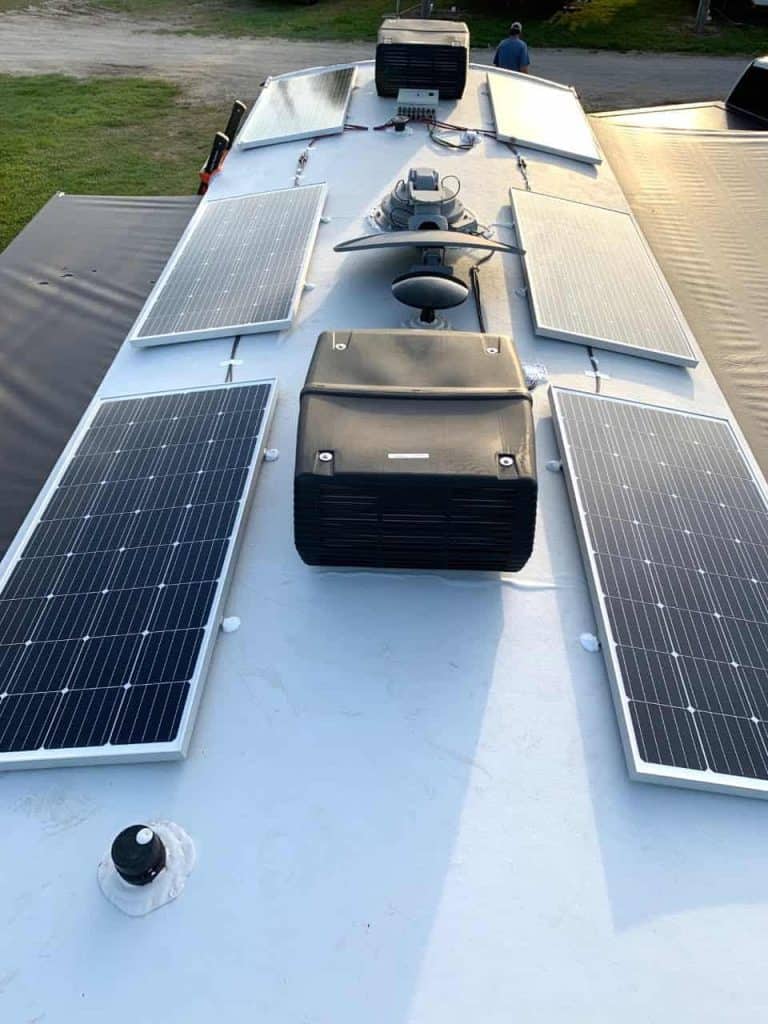
RV Solar Panels: What Are They?
Scientists first noticed the photovoltaic phenomenon in the 1800s, in which some materials will generate an electric charge and current when exposed to sunshine.
Over the years, several “solar engines,” as they were known, were developed, although the majority of them had relatively poor efficiency.
It wasn’t until the 1950s that researchers realized silicon, which is abundant in sand, could make solar panels that were far more effective.
Due to this original finding, solar cells that could capture solar energy and convert it into electricity were created.
Although technology has advanced throughout time, the fundamental idea has not changed.
A solar panel is a panel made of solar cells that collect energy from the sun and convert it into electrical power for use in buildings, companies, coffee makers, and yes, even RVs!
Let’s investigate how it all works!
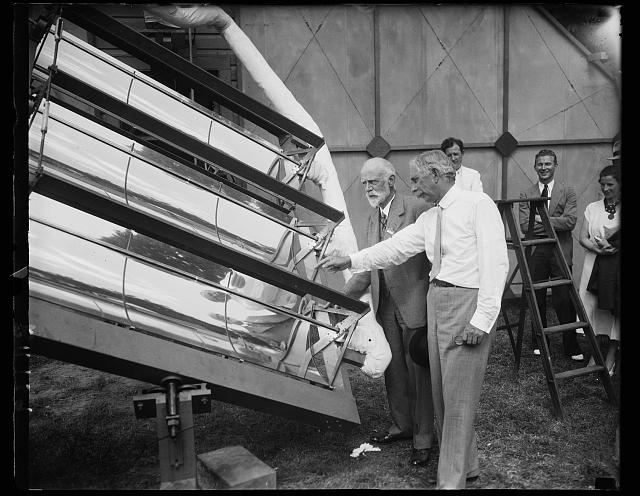
This 1935 image depicts a prototype “Solar Engine.” Attempts to harvest solar energy have been made for more than a century, albeit they are nothing like the straightforward panels of today.
The Function of RV Solar Panels
Consider that your RV has a few solar panels on the roof.
When the sun shines on your solar panels when your RV is moving or parked throughout the day, the cells in the panels take in energy from the sun.
Circuits within the solar panel cells convert the solar energy received by the sun’s cells into electrical current.
A charge controller, which regulates the current flowing through the battery, receives the electrical current via cables.
The system so appears as follows:
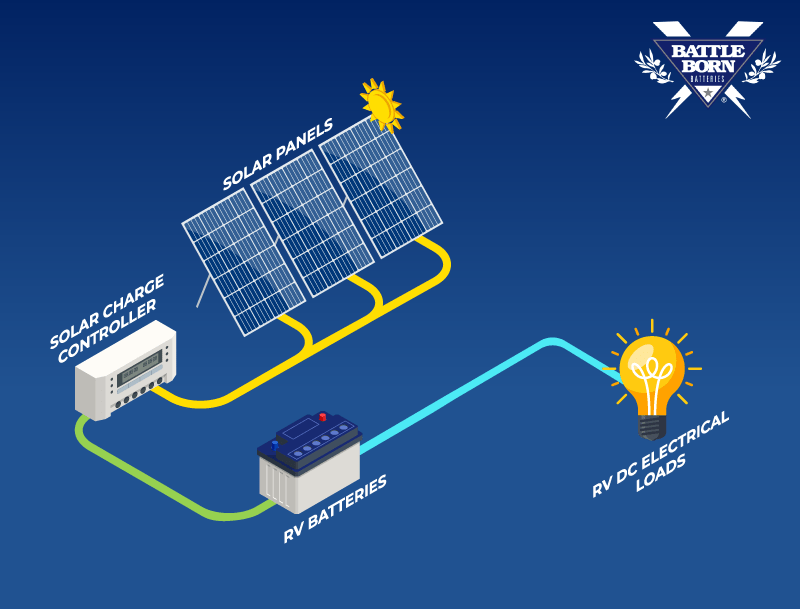
Essentially “saving” energy to be utilized to operate gadgets and appliances in your RV or charge equipment for your future use, this energy transforms into DC (direct current) electricity that charges your RV’s house battery or batteries.
Normally, the solar panels and batteries provide 12 volts of DC electricity.
The RV’s lights, appliances, and electronics are all powered by DC.
To power 120-Volt appliances like a coffee maker, you may also take that 12-Volt DC energy and convert it to 120-Volt AC (alternating current) electricity by running it through an inverter.
There are several 120-Volt outlets in your RV, but unless you’re using a generator or connecting it to shore power, none of them are powered.
When boondocking in the desert, you may harness the power of the sun by using solar panels, a charge controller, batteries, and an inverter to provide 120-Volt electricity at your disposal.
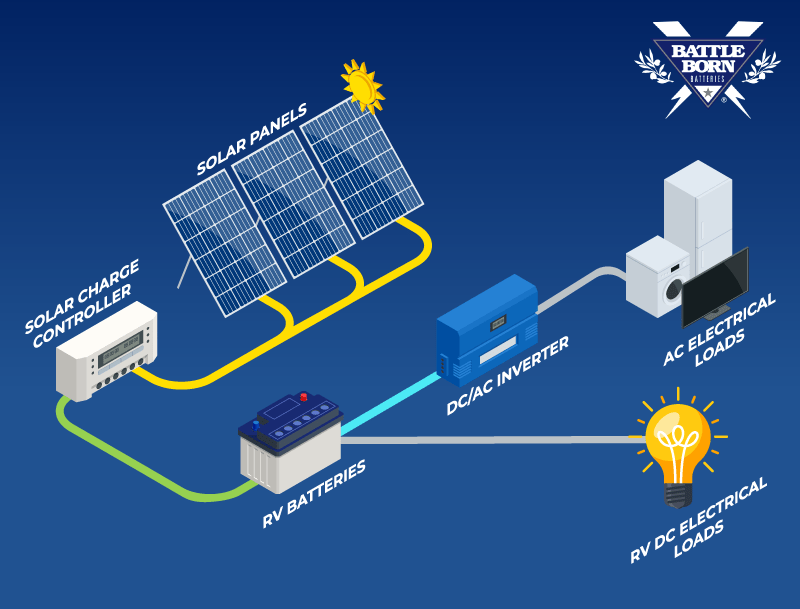
The sun’s energy may theoretically be used to power anything if you have enough solar panels, batteries, and conversion tools.
How to Calculate the Number of Solar Panels Your RV Will Need
Finding out a few details is necessary to determine how much solar power you need for your camping comfort.
These two factors in the equation enable you to calculate the number of solar panels required to generate the desired amount of electricity from solar energy.
This equation’s two components are:
- How many watt-hours a day will you use? (Energy expended
- How much power is supplied to your battery or batteries by your solar panels? (Stored energy)
For an ideal system, all of this must be balanced.
Solar panels that don’t have enough batteries to store all the energy they generate are a waste of money and won’t provide you the electricity you need.
On the other hand, a single solar panel and several batteries won’t be able to capture enough solar energy for you to utilize!
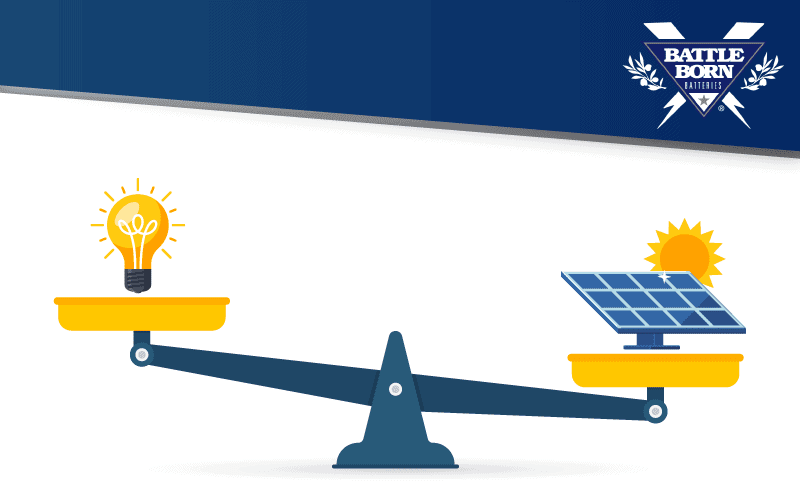
Although understanding this balancing act may be difficult and calls for a whole piece to describe, we can summarize the essentials here.
#1. Calculating Your Energy Consumption
You must first be aware of how much energy you consume each day.
You may do this in a few different ways.
First, there’s math.
Calculate how much electricity you’ll need when boondocking in your RV by finding out how much each appliance or gadget requires and multiplying that figure by the number of hours the appliance or device will be used.
Here’s an illustration: One HDTV in your home uses 90 Watts.
You anticipate watching television for two hours a day, on average.
90W x 2 hours is 180 Watt/hours per day.
You may repeat this process for whatever appliance or equipment you want to use while boondocking, adding the total number of Watt-hours used.
The number of panels you need may then be determined from there.
#2. Calculating the Needs for Energy Generation and Storage
It is reasonable to assume that a 100-Watt solar panel will provide 350 Watt-hours of electricity every day on average.
Nevertheless, this will vary greatly depending on the area and season.
This post from Mortons on the Move discusses how to use PVwatts to get a more precise answer.
To store that much power, you’ll also need to know how many batteries you’ll need! A 100 ah 12 volt Battle Born battery can store around 1200 Watt-hours.
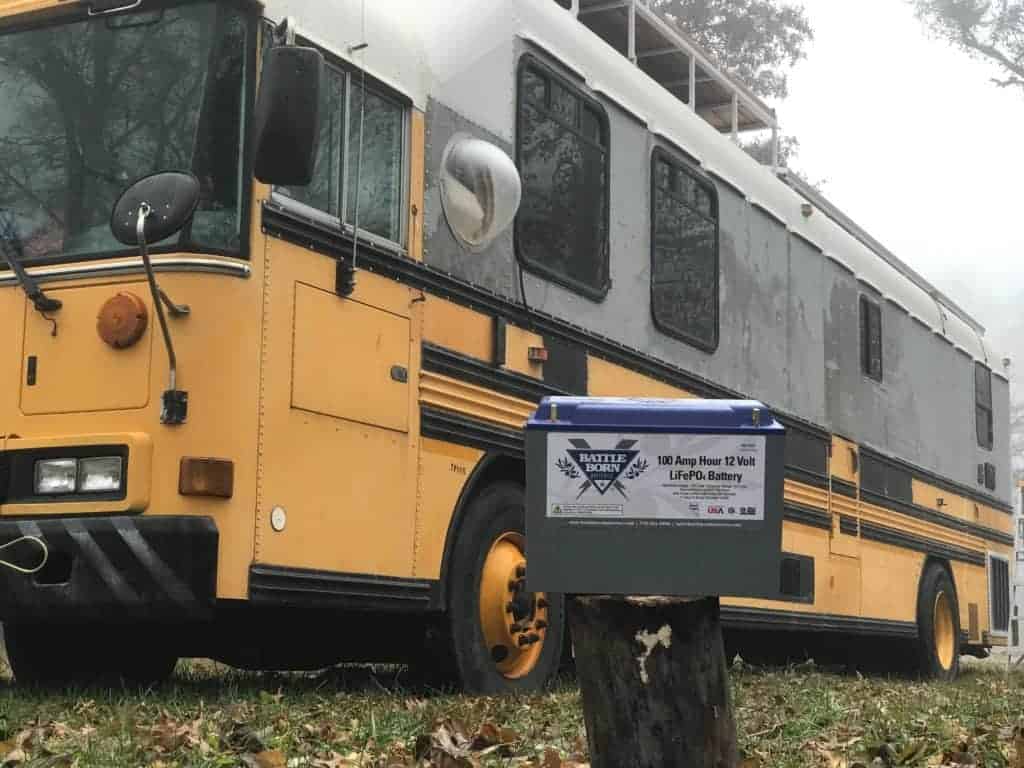
Remember that your solar panels will only produce the quoted amount of Watts under ideal circumstances.
Direct sunlight shining straight on the panel would be ideal.
Your 100-Watt solar panel won’t produce 100 Watts on a cloudy day.
Your 200-Watt solar panel won’t produce 200 Watts if you park in the shadow.
Because every day is different, it may be difficult to predict how much electricity you will need.
After spending the whole day in the great outdoors, you could go to bed and watch 15 minutes of television tonight.
It could rain tomorrow, so you’ll remain inside your RV, work extensively on your laptop, and spend the evening watching television.
So it’s wise to estimate highly in most cases!
Some folks would rather just go camping without electricity connections and keep track of their battery use during an average day than use arithmetic to estimate their daily power consumption.
You can get an exact assessment of how much electricity your RV requires by installing a battery meter, such as the Victron BMV712, before adding solar.
Solar System Components For RVs
Let’s examine the components of an RV solar system before we look at how to build one:
#1. Power Bank
The battery bank in your RV is where all the electricity comes from.
A battery is the only source of power storage for an RV.
Sun energy is stored in the battery for later use by you.
The battery bank will be charged by your solar panels.
However, not all battery banks are made equal, and not all are suitable for the erratic solar system charge cycles.
Lead-acid batteries are not as good as lithium batteries for solar applications.
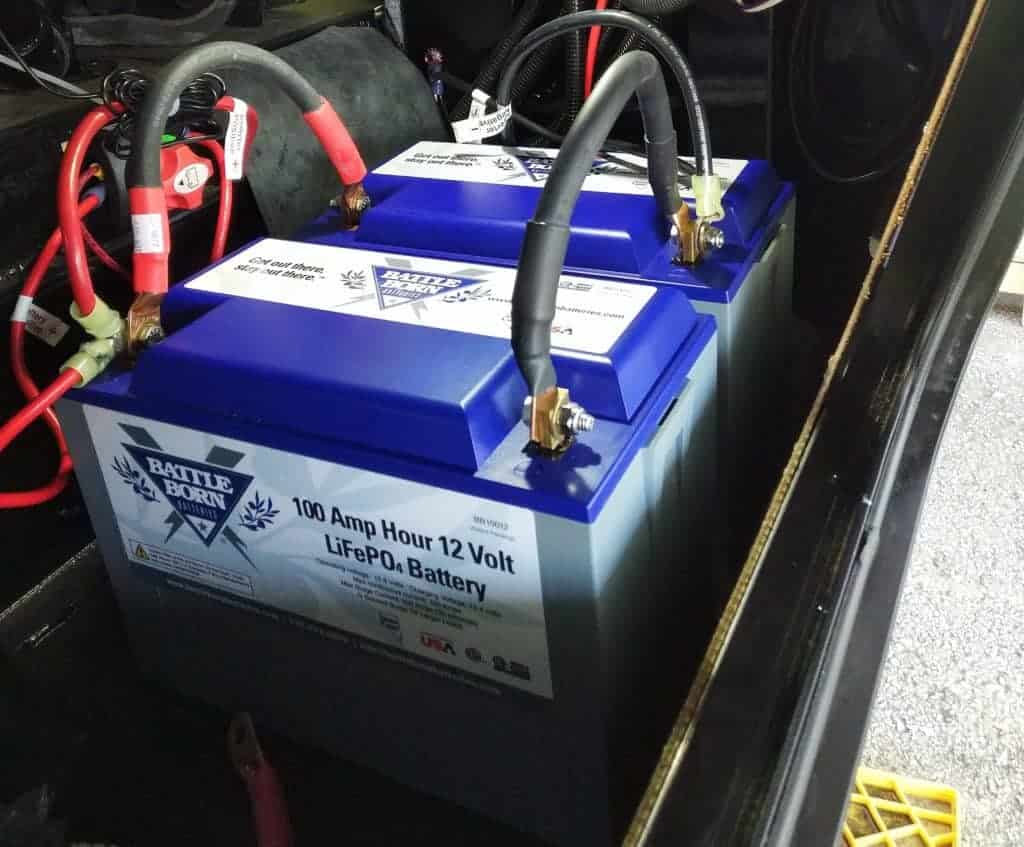
#2. Solar Panels For RVs
Your RV’s roof will be covered with solar panels that gather energy from the sun in solar cells and send it (through a charge controller) to your battery bank.
You have the option of using a mounting system that enables you to tilt your solar panels toward the sun or having them rest flat.
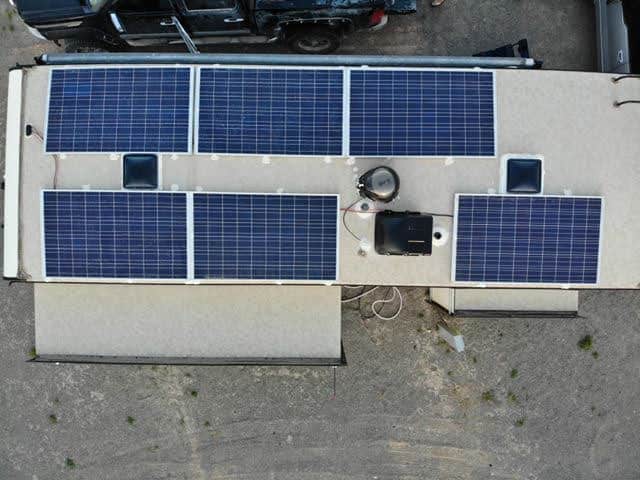
#3. Charging Control
Inside the RV, the charging controller is mounted.
Your solar panels are connected by wires to the charge controller, which in turn is connected by wires to your battery bank.
The charge controller’s job is to regulate how quickly your batteries charge.
In the case of an MPPT charge controller, the charge controller is necessary to run the panels as effectively as possible and to avoid overcharging.
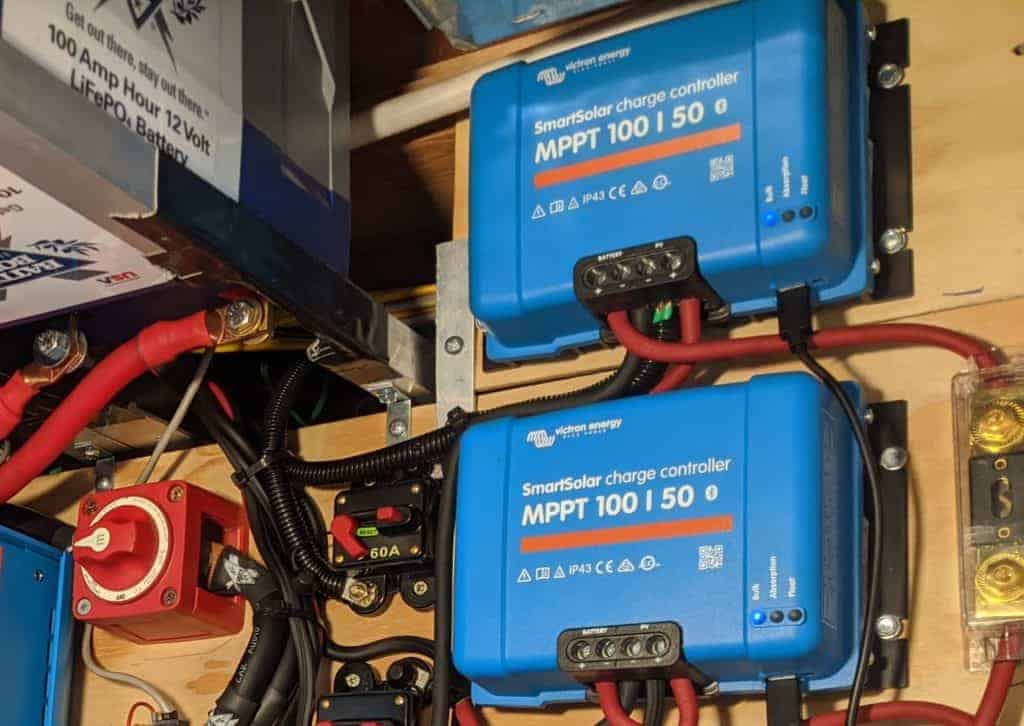
#4. Inverter
Your batteries are producing 12-Volt DC energy.
The 12-Volt (cigarette lighter) ports in your RV as well as any 12-Volt gadgets and appliances may be powered by this.
An inverter that converts 12V DC power to 120V AC power is required if you wish to utilize 120-Volt AC power to run a coffee machine, laptop, Instapot, or any other device that needs AC power.
Your inverter will be mounted inside your RV as near to your battery bank as practical, and your AC appliances and gadgets will use that inverter to receive electricity that has been converted (from DC to AC).
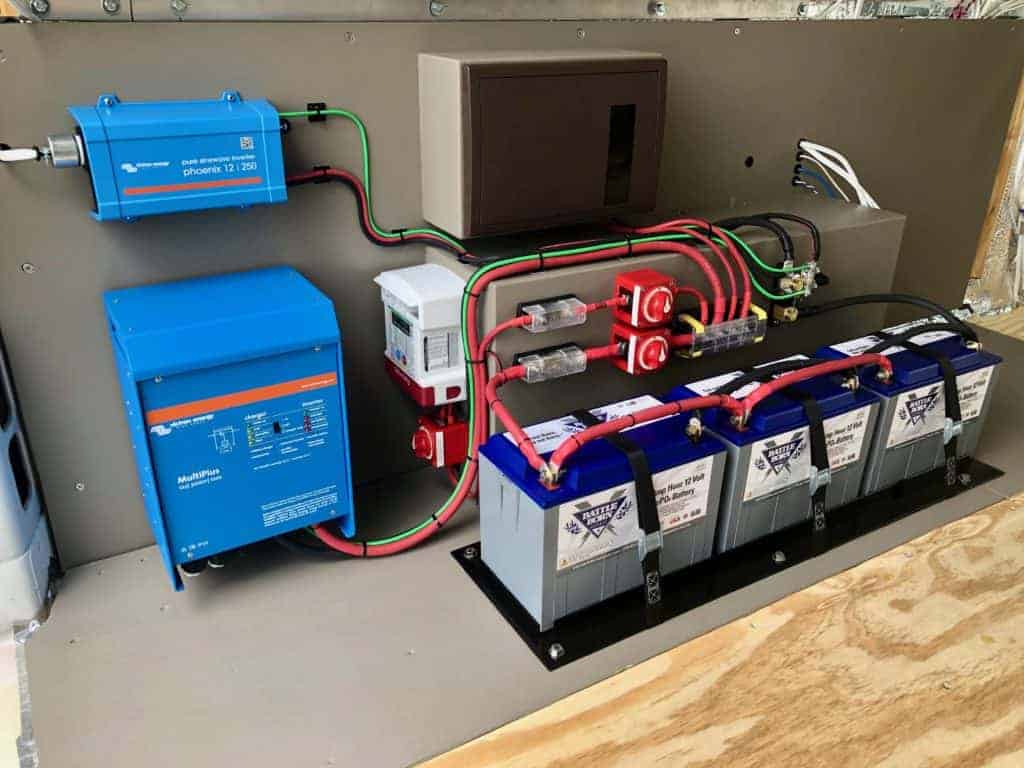
Inverters fitted in a specially designed Van Electrical system are the blue boxes.
Are Rv-Specific Solar Panels Required?
No! It is possible to make any solar panel work with an RV, although there can be some difficulties.
Available space comes first.
There may be a lot of items on an RV roof, necessitating the usage of smaller panels.
Full-size residential panels, like those used on residences, may be utilized for RV solar panels if the roof is open.

On this RV, there are 72-cell residential solar panels.
The voltage at which non-RV-specific panels operate presents the second difficulty.
Most PWM charge controllers can charge a 12-volt system using the typical RV solar panels’ voltage range of 17 to 20 volts.
PWM charge controllers cannot be utilized with home solar panels, which are typically 40–70 volt systems.
As long as the controllers have a high enough voltage rating, you may utilize MPPT-style controllers.
The majority of solar panels may be used by an RV by using an MPPT controller.
Solar Panel to RV Battery Connection
Let’s find out how to connect the solar panels to your RV batteries so they can generate the power you need now that we know how many you want to install!
Before attempting to install a solar electric system for an RV, make sure you are comfortable dealing with electrical wiring.
Solar electric systems for RVs come in a wide variety.
The voltages are safe and easy to install for systems or kits up to a few hundred watts.
The following guidelines are a high level of how the components should be connected, regardless of size.
Assume that you have a battery or battery bank installed in your RV and that you have acquired a kit including the solar panel system’s components.
What’s in your kit will be:
- A solar panel (or many, depending on what you’ve chosen to purchase).
- A controller of charges.
- A wiring diagram (and possibly connectors, adapters, and mounting brackets)
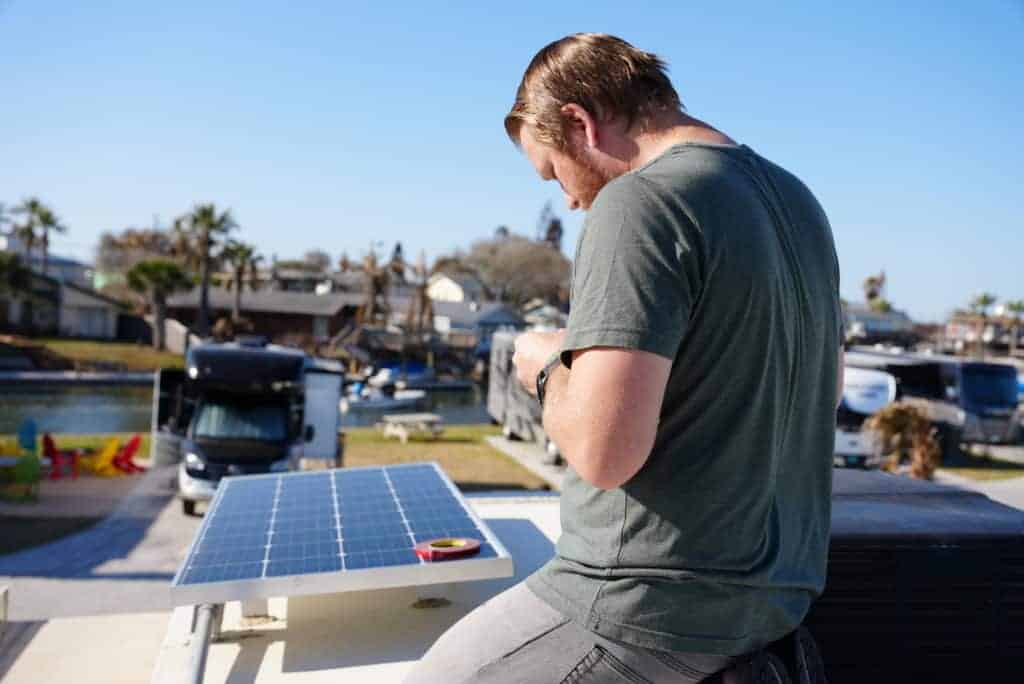
A battery monitor and an inverter can also be useful (to turn that 12V DC power into 120V AC power).
How to Connect Your RV Batteries to Your RV Solar Panels
The steps to attaching your solar panels to your batteries are as follows:
- Install your solar panels on the RV’s roof.
- Install your charge controller as near to your batteries as you can within the RV.
- Connect the wire from the solar panels to the charge controller inside the RV. (If they are close to your batteries, you may route your wire via a refrigerator vent or through the holes where the plumbing enters the RV. If not, you may drill a hole in the RV’s roof to put your cables through, making sure to fully cover and seal any holes that were created.) The wires for this run should have a fuse or circuit breaker installed on them.
- Your battery bank and your charge controller should be connected via cables. On these lines, a fuse that is a little bit bigger than the rated current of the charge controller should be fitted.
- Although the RV solar panels are not yet linked to the charge controller, the system is now completely installed. It’s crucial to double-check every wiring to ensure that the polarity (positive and negative) is accurate before making the final connection. You may connect the solar panels to the charging controller after you’re comfortable. To avoid a spark, we advise doing this at night or with the solar panels covered.
- It’s optional to complete this step, but if you want to utilize 120-Volt AC appliances, you should put an inverter inside your RV as near to the batteries as you can and connect the necessary wire to it.
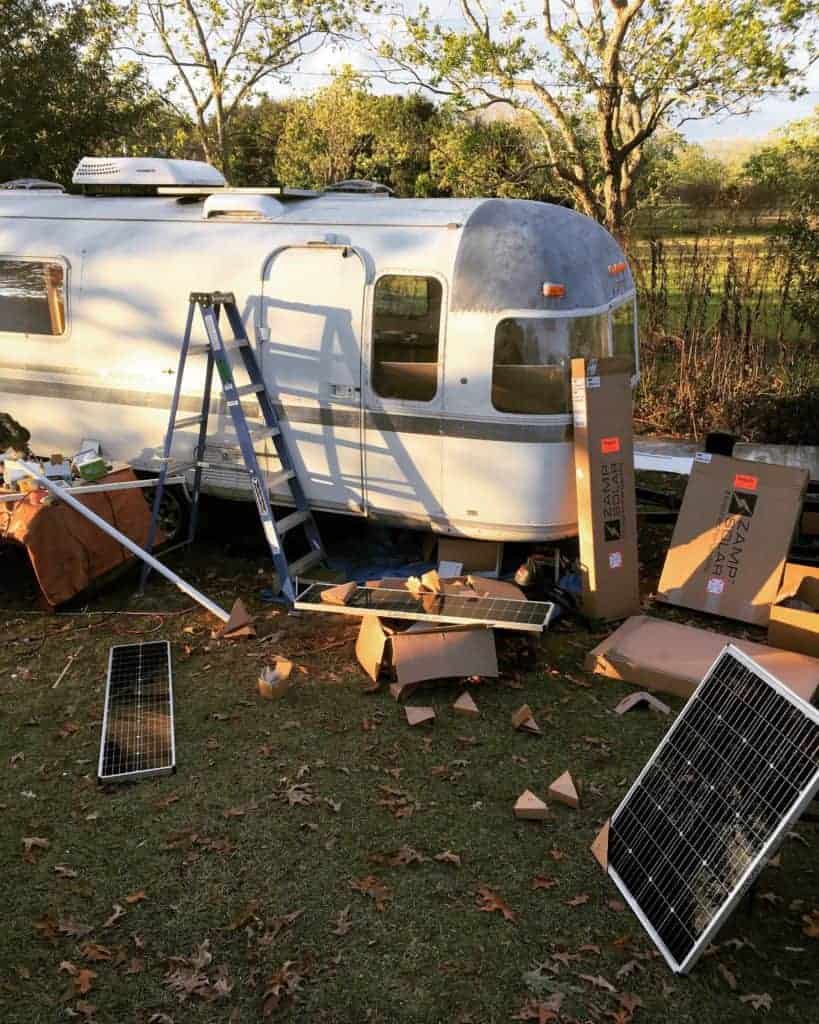
Note: There is no need to unplug the RV’s existing converter if you are connecting your solar panels and controller straight to your battery bank.
The battery bank will be able to receive charge from both the converter and the solar panels.
Do RV Solar Panels Pay Off?
Purchasing a solar system would not be advantageous if you often camp at RV parks and campsites where you will be paying for electricity connections to power your RV and your different electronics and appliances.
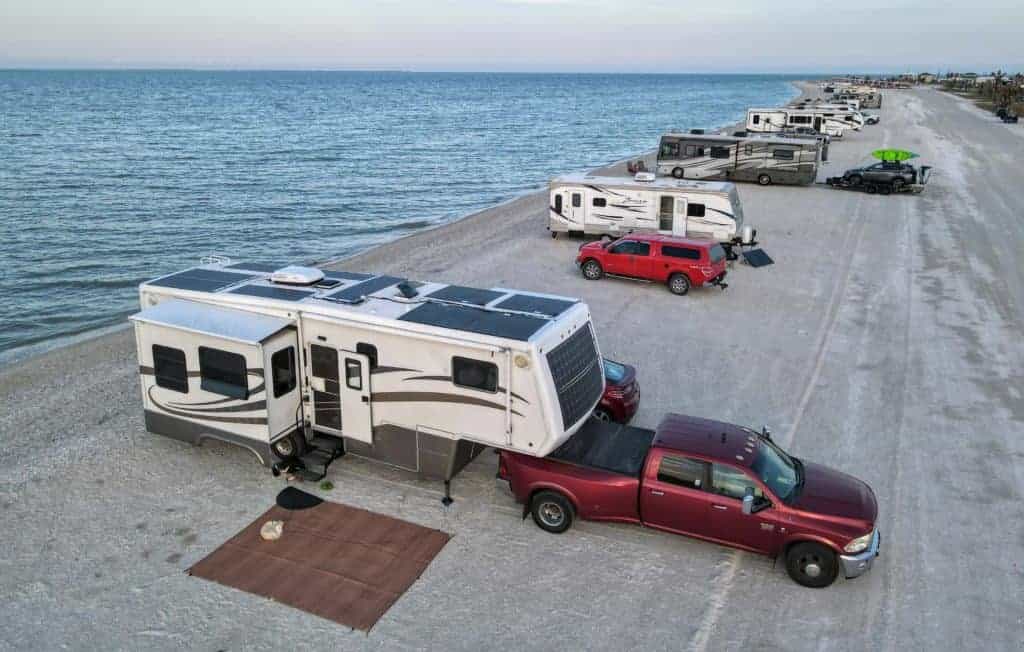
Solar panels could be worthwhile if you want to camp in locations like these without hearing your generator!
A solar panel system is a great addition to your RV lifestyle, however, if you want to boondock—stay in places without electricity hookups—such as beaches, municipal parks, state parks, and the desert.
Solar panels may reduce the need for a loud generator to recharge your batteries since they offer quiet electricity.
A very astounding advancement in renewable energy are solar panels! A solar panel system liberates you as an RVer! It enables you to travel and reside anywhere while meeting all of your electricity demands by using the immense power of the sun.

